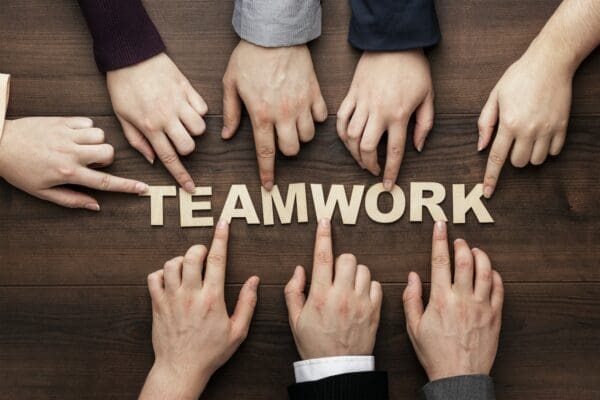Assembling the Greatest Team
When I thought about writing an article on Belbin Team Roles, I immediately thought about the greatest team of recent times – the Avengers. I know, I know, but hear me out. The Avengers were assembled to work together as a team to achieve the greatest purpose – which could have only been done by them working together. Now, individually they have very unique skills and they each play a distinct role within the team. But they were pulled together to work cohesively, because of the role each of them would play towards the overall teamwork of defeating the big bad.
In most experiences, individuals are simply pulled onto a project or a group to work together to achieve goals when little or no specific focus has been done to understand the balance needed for the success of the group and its objectives.
Specific thinking needs to be done around what balance would be needed, what strengths and skills would be needed and, crucially, would these individuals be able to work together to achieve the objective.
I’ve experienced teams where people were assembled like the Avengers, only having seven Doctor Banners. This led to a lot of research and not much action.
You see, the Avengers as a team is successful because of the balance of the roles of each member. Just like that, a team at a workplace needs a balance of the roles of the individuals to complete what is expected of them.
Dr Belbin
Dr Meredith Belbin, a British Cambridge graduate, studied teamwork for many years, and he famously observed that people in teams tend to assume different “team roles.” He identified nine roles within a team and placed those into three main categories. What is interesting when we first have a look at the three categories and the nine different team roles, we immediately start to place those we work with and ourselves into categories and roles. I found myself reflecting on my own category and role, and how it made sense to the overall deliverables of my projects and my role in the organisation I work for. I also reflected on the frustrations felt by some of my colleagues around other teams and people – concluding that closer examination of the roles within the teams was perhaps not suited to achieving the overall objectives since there was no balance.

Belbin’s Team Roles
Before we jump into the Team Roles, let’s have a think about what that really means. A team role is perhaps one you belong to right now – where you have a need to work, contribute and relate with others in a particular way.
Belbin identifies 9 types of roles individuals could play within a team, these are as follows:
| Action-Orientated Roles | Implementer | Organiser – turns ideas into practical solutions. |
| Shaper | Energetic – drives a project forward. | |
| Completer/Finisher | Meticulous – ensures a finished product with no errors. | |
| Thinking-Orientated Roles | Plant | Creative – generates new ideas. |
| Monitor/Evaluator | Analyses – considers the big picture and critiques. | |
| Specialist | Expert – has a specific area of knowledge for the group to tap into. | |
| People Orientated Roles | Coordinator | Delegates – draws out team members and assigns work according to their strengths. |
| Team-worker | Carer – smooths out frictions within the group. | |
| Resource investigator | Explorer – pursues new ideas and often a good networker. |
Expanding on the Roles

But what do these mean? I found myself thinking of the Avengers and I did a fun exercise where I tried to place some of them in their Belbin Role.
I can see Ironman as a Plant – he’s creative and he thinks of new ideas. Thor would be a Shaper since he is boundless energy and drives the project forward with great momentum. Captain America is an Implementer, he is the organiser who turns ideas into practical solutions. Bruce Banner is meticulous and I think he could be a Completer/Finisher – I’m not sure I’d put the Hulk in the same category. Fury is obviously the Coordinator who delegates and draws out team members. He assigns work according to their strengths.
Hawkeye is a Specialist – an expert in his field and has a specific area of knowledge for the group to tap into. Black Widow was interesting as I think she is a Resource Investigator who explores. She pursues new ideas and is a great networker. Agent Coulson, the oft-forgotten Avenger, is a Team Worker who is the carer. He smooths out frictions within the group.
One of the key takeaways from this exercise was considering how, if everyone on the team had similar skills, behaviours and personalities, the team would not function at their best. So having a diverse set of roles within a team is very healthy for overall success.
The Allowable Weakness
Whilst that was a fun exercise, the importance is that in every great team, there are roles for individuals with unique strengths that would be able to work together. If there were the same role types in one team, it would perhaps not work as effectively. Sometimes even when individuals assume they aren’t necessarily ‘team players’ or effective in a group (the immortal words of Tony Stark saying ‘I don’t play well with others’), they are exactly what is needed for the balance and effectiveness of the team.

Belbin identified that in each of the roles, there is ‘allowable weaknesses’ meaning that in each role, there is a weakness that exists, but that the weakness is allowed or necessary because, without it, the balance of the team would not be there. In other words, both the strengths and the weaknesses of these roles are necessary for the team to function at its best.
| Preferred Role | Allowable Weaknesses |
| Implementer | Adherence to the orthodox and the proven. |
| Shaper | Prone to frustration and irritation. |
| Completer/Finisher | Perfectionism. |
| Plant | Preoccupation with ideas and neglect of practical methods. |
| Monitor/Evaluator | Scepticism. |
| Specialist | Acquiring knowledge for its own sake. |
| Coordinator | Inclination to be lazy and delegate the work away. |
| Team-worker | Can be indecisive and try to please everyone. |
| Resource Investigator | Loss of enthusiasm once the initial excitement has passed. |
If you think about earth’s greatest heroes, you can see the ‘allowable weaknesses’ of a Plant like Ironman being very prone to preoccupation with ideas and neglect of practical methods but that was what ultimately led to the reverse snap. Sometimes neglect of practical methods will be in direct contradiction of another role’s strength. This means that there will be discourse within the team.
Possible Limitations

There are limitations to using Belbin Team Roles. Belbin North America recognises that Belbin Team Roles are designed for teams – well, yes. The clue is in the name. Whilst it works for a team scenario, a team is made up of individuals. I would argue that whilst there is an overall benefit in implementing the Belbin Team Roles to a team, it also has the advantage of looking at individuals and their strengths and weaknesses.
There is a deeper understanding of the individuals and that can lead to knowing more about someone’s behaviour, ability and specialisms far more than their resume would allow. Belbin Team Roles are very much for work, not for other facets of life where there is a team.
In sports, for example, Belbin may not necessarily work as well as it would in an organisation or a project. It is perhaps best suited for where individuals have varied strengths and allowed weaknesses that can be assembled to work together to achieve an outcome.
Further Limitations
Two of the more interesting ‘limitations’ of Belbin Team Roles are, that it measures behaviours and not personality and, it has a cultural bias. When assembling a team, it’s advisable to look holistically at the individual, not just behaviours but personalities. Belbin looks only at behaviours so personality is sometimes overlooked.
When working in a team, personality becomes very interesting and can either hinder or help the overall team vibe. With this said, it’s advisable to use other decision-making models along with Belbin when bringing together a team.
Cultural bias must be considered when implementing Belbin Team Roles method. This is because of how the method was developed and who for. It’s not to say that it cannot be implemented for other organisational cultures, but it must be considered that the method was developed for a specific group of the demographic. When confronted with this limitation, I try and apply common sense and practicality.
Getting the Most Out of Belbin

Max Isaac of Belbin North America recommends these steps on getting the most out of Belbin:
- Discover patterns of behaviour in a work setting (by identifying roles, the behaviours become apparent, and vice versa).
- Receive non-defensive feedback from observers (the Belbin Report uses adjectives and retains observer confidentiality).
- Increase coherence between how you see yourself and how others see you.
- Uncover hidden talents and strengths (more than what a resume or interview shows).
- Quickly see the dynamics and composition of a team (especially useful for new managers, project teams, and virtual teams).
- Increase team performance through an understanding of how the team roles are distributed among team members.
- Become more effective by playing to your strengths.
These are all excellent outcomes in using Belbin at work.
Is it Possible to Have Multiple Roles Using the Belbin Team Model?
Yes. It’s possible however there are some caveats. None of us are one dimensional. We all have various strengths and sometimes those can overlap into multiple roles in the Belbin Model. The way it’s thought of is, there are some roles we prefer and some we less prefer. Belbin recommends that team members possess some degree of self-awareness. This will help to understand what roles they prefer most and concentrate on those. Coupled with the roles of others in the team, the individual is likely to be in the right role for them as well as for the cohesion of the team. Could we really see Hawkeye as the Plant who is creative and generates new ideas? No. But he may have Team Worker skills which can also be a strength to the team.
According to Christopher Whitehouse, the leadership position in a team demonstrates how important flexibility is; teams tend to perform best when there is one clear leader. If a team contains a Shaper and a Coordinator both will generally want to lead. So it will be important for one of them to step into another, slightly less preferred, role for the good of the team. Likewise, if a team lacks one of these types, ideally somebody with some preference for either of these roles should be appointed as the leader, even if they might prefer another role.
Balance
“What is needed is not well-balanced individuals, but individuals who balance well with each other.” Dr Belbin recognised that we all have something to offer. It may not be to the teams that we think we belong to, but there is a place for all of us within an organisation. It’s where we are assembled into the right team that suits what we can offer that really makes the biggest difference. This balance is so critical for the overall success of the deliverables. Thinking about the Belbin Team Roles, the people you have to work with and the outcomes you are expected to deliver. You have the requirements and you have the ability to understand what is needed from the individuals and how they will likely work with the others in the team being assembled.
It is far more counter-productive to simply pull someone into a project or a team because you think they need the exposure or the work. This could lead to disengagement with the person who does not fully understand their part in the overall team, or how to work with the others to achieve what is needed. Also, it could lead to other team members demonstrating behaviours that isn’t helpful to working together.

How Do You Know Which Belbin Team Role You are?
Belbin has a Belbin Team Roles Test that is made up of two parts – how you see yourself (Self Perception) and how others see you (Observer Assessment). The test collects data from you and from others (how others see you) and then you reflect on these. This leads to enhanced self-understanding and self-awareness. Doing the Belbin Test will help you to understand your strength. This leads to more effective communication between you and your team, and your manager. CEOSage has a guide to cultivating self-awareness which is a foundation skill for emotional intelligence (perhaps one for another article). It’s worth a read as it has many links and can take you into a rabbit hole (if that’s your thing) to uncover your own path to understanding yourself and therefore others.
Mind Tools wrote that, ‘by working out which roles team members are taking on, you’ll be able to better balance your team across the roles.’ I think that overall comprehension of the Belbin Roles can provide invaluable insight into your own strengths and weaknesses. This can help you to understand the strengths and weaknesses of others. This understanding is a cornerstone of identifying and resolving any teamwork obstacles. It’s also key in strengthening the overall team performance and the way team members feel valued.
Action: For even more useful content on team building, check out our ultimate guide on Team Building Skills.




